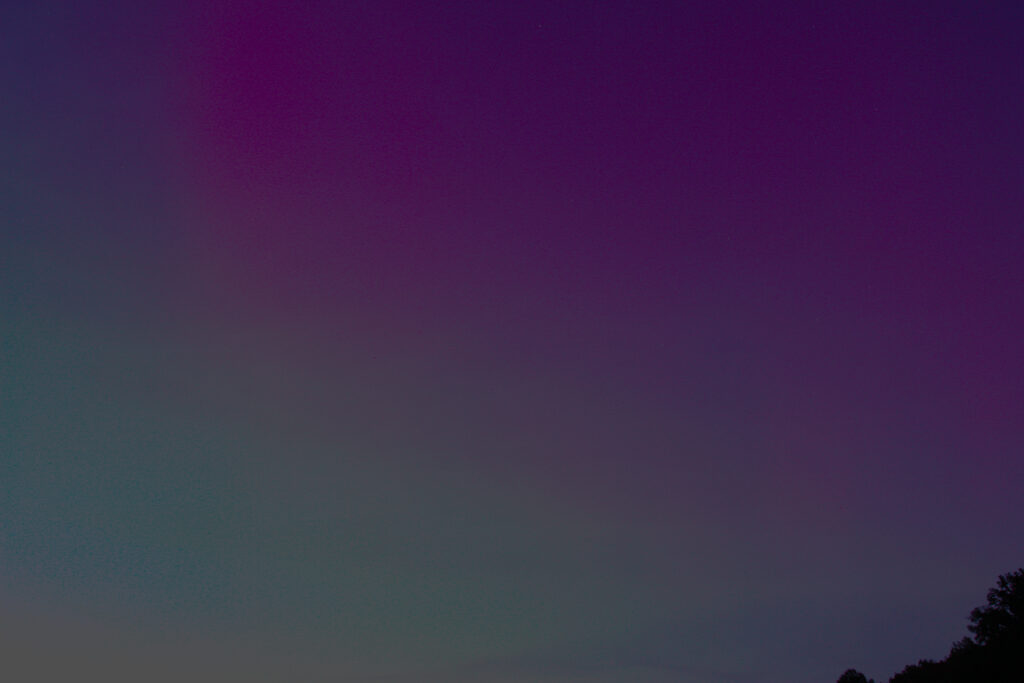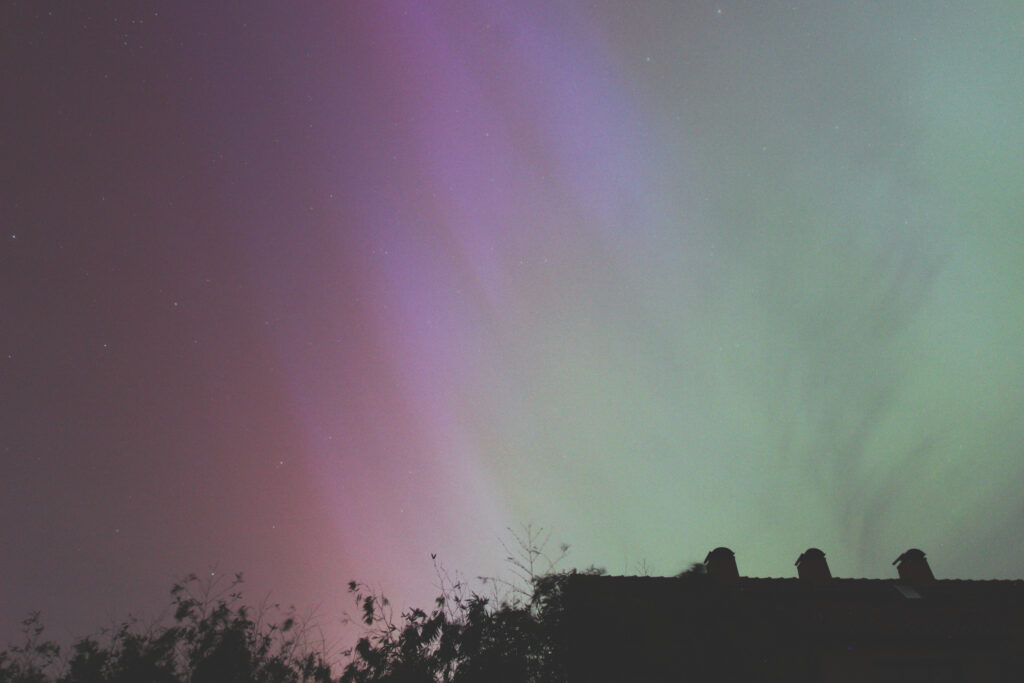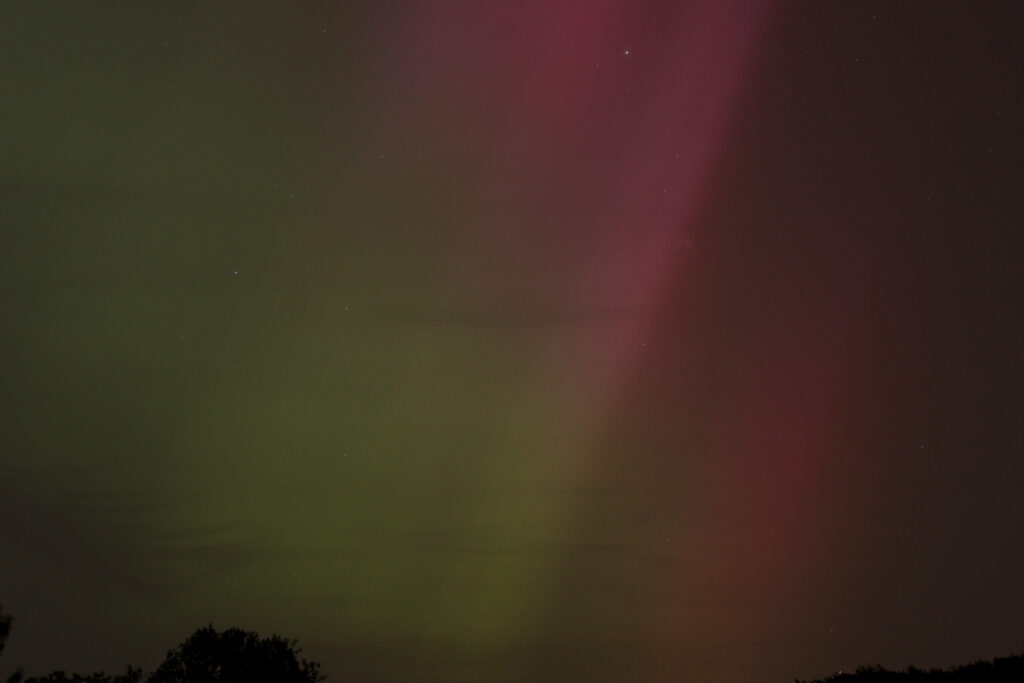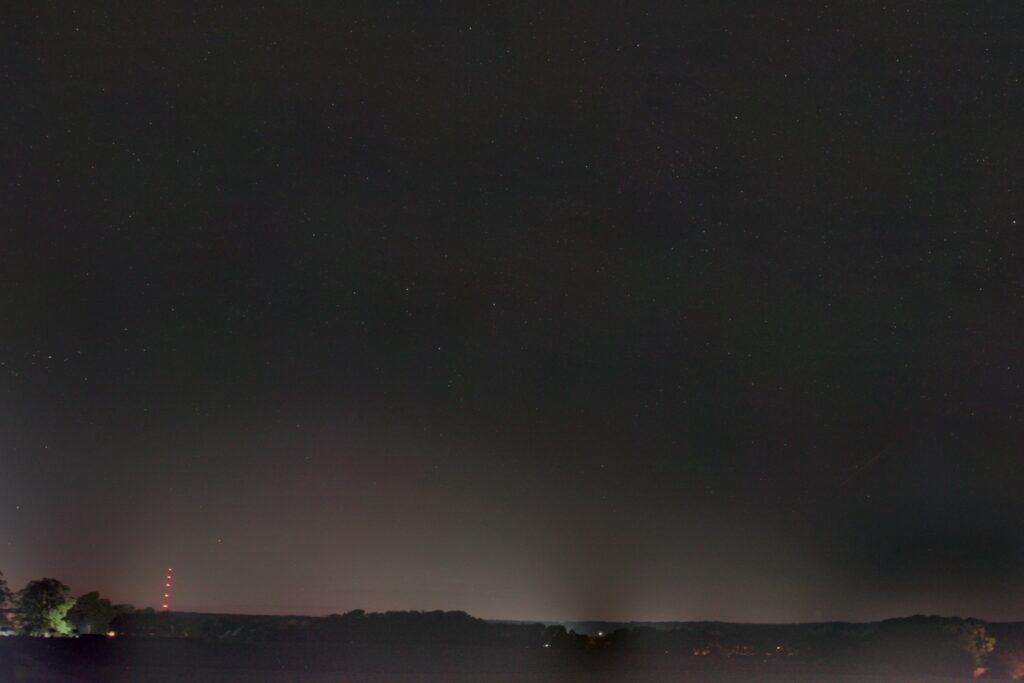Werner Wöhrmann, May 10, 2024
The forecasts for the sighting of Northern Lights promised a lot. And quite unusual for these latitudes lately: the weather should play along.
I wanted to observe together with our kosmos-os colleague Gerold Holtkamp. The observation site had not yet been determined. But here in Icker in the district of Osnabrück it is dark, no light in sight.
So we decided to stay here and observed in front of the house and later in the garden
Gerold was equipped with a Canon 6D and a tripod. For me it was a sky tracker and a Canon 600 D with a 17/40mm lens. Gerold as an experienced Northern Lights observer had the better camera settings. My exposure time was longer because I set a low ISO because my camera has a worse noise ratio.
As soon as dusk was a bit advanced at 10:20 p.m., it started. No, it was not the sunset that we saw shimmering reddish in the sky.

Unfortunately, a farmer passed us with full light on his tractor. Annoying, because the bright light significantly limits dark vision for some time. But the Northern Lights continued to show their best side for a long time.
I was overwhelmed and could only be amazed. The colors ranged from green to red to violet.
From northwest to southeast the sky was an interplay of colors. We could even see beams of color above our heads. Like a dome above us!

There was a lot of movement and changes in the sky. Around 2: 00 a.m. it became less.

The next day there was again a positive forecast. Gerold and I went to the "Lechtinger Mühle". A little above the mill, on a dirt road, we set up our tripods.
With camping chairs and thermos flasks, we waited for the things that were to come.
Unfortunately, we could only see reddish beams of light in the north for a short time. But a night under the stars also has its charm.

In retrospect, we were able to see the Northern Lights in two nights. The first night was a unique experience that will be remembered fondly for many years to come.
All photos were taken with:
Stativ mit Star Adventurer Nachführung, Kamera Canon EOS 600 D, Objektiv Canon 17 / 40, Blende 6,3, ISO 400, Belichtungszeit 20 Sek., Brennweite 17 mm.